Riding the Original Moab
Bicycle tires rolled along an ancient land as I steered across sun-cooked hills clothed in olive groves. A village cut into a mountainside grew larger ahead, a collection of concrete-block homes the same bleached hues as the surrounding hills. The mournful-sounding call to Muslim prayer, known as adhan, carried through parched air.
A tall, swarthy man stepped out of his home onto a second-story deck and saw me and my riding companions. He vigorously thrust his hand in the air.
“Welcome!” his voice boomed. “Welcome!” even louder than the reverberating adhan.
I waved and yelled, “Shukran!” or “thank you” in Arabic.
The American woman riding with me was charmed. Like me, this was her first trip to the Middle East. “It’s awful to say,” she admitted moments later, “but the news give you such a terrible impression of the world. To come here and have people yell out ‘Welcome’ is so refreshing.”
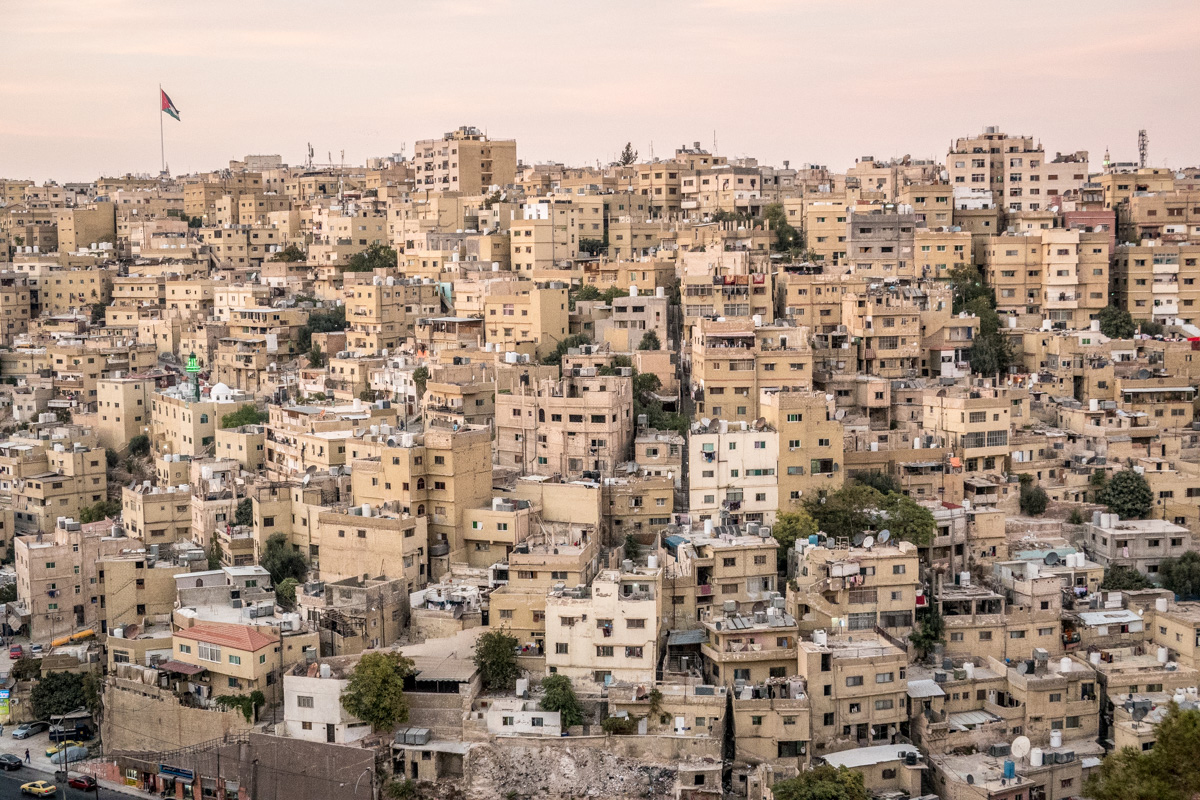
I was in the country of Jordan, an anchor of peaceful stability in a tempestuous region. A rising star on the traveler circuit thanks to its safety and vibrant history, cyclists are discovering this Islamic kingdom’s many charms. Though I only had a couple days to ride, SpiceRoads Cycling, a tour company specializing in off-the-beaten-path destinations, graciously allowed me to jump in on the first two days of their Jordan mountain bike tour.
When I met up with the SpiceRoads crew, I’d already spent a few days exploring the capital city of Amman, a bustling hive of sand-colored buildings, Roman-era ruins, a few glassy skyscrapers, and throbbing street markets full of pyramidal mounds of spice. A 1,900-year-old Roman coliseum in the heart of downtown serves as a bustling plaza coursing with families, children on roller skates, young couples hand in hand, and a periphery lined with tall, brass hookahs, or water pipes, that locals enjoy regularly — apparently renting by the puff. On a steep hilltop above the coliseum rises a complex of Roman ruins where Amman residents and tourists lolled casually on age-old, unprotected columns. The stone remnants of a giant hand lay on the ground, fingers grasping at immortality.
Joining with a half-dozen or so cyclists from around the globe, we left the city for a remarkably arid countryside, past more Roman-era ruins, and disgorged from our van on a hilltop of olive groves. The olives were ripe but dusty, and the people who grow them would wait to harvest until the season’s first cleansing rain. We’re each given bright-green hardtail bikes and set off on rolling dirt roads where we soon came to the village where calls of “Welcome!” rang through the air. We passed a group of schoolchildren moments later and the boys waved enthusiastically.
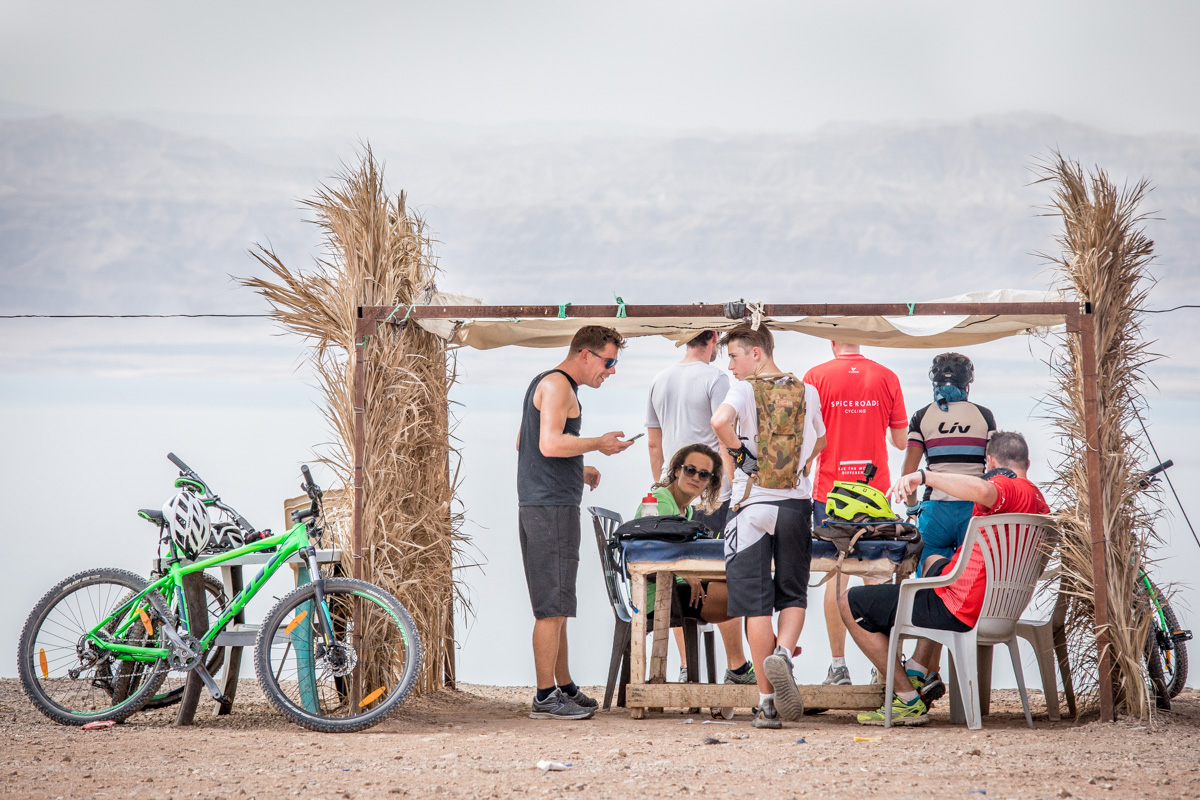
Our cycling guide, Anton Al-Sager, a Ukranian expat and former racer, told me about the new nation-spanning mountain bike route, the Jordan Bike Trail. (A corresponding trail for hiking is called simply the Jordan Trail.) At 450 miles long, it’s designed to be ridden in 60–70-kilometer chunks. Camping is readily available (linking hotels is also possible), and if you pitch a tent in some random spot the concern is not that anyone will be upset, but that they will invite you into their home. This hospitality is woven deep into Jordan’s welcoming culture.
Down, down, down we flowed on a switchbacking, sometimes sandy road that plummeted down desert hillsides until we suddenly found ourselves in lemon groves and, to my great surprise, crossed a small bridge across a cool, churning river. In this driest of landscapes, the site of water was almost shocking, triggering some primordial sense of jubilance, the green reeds on the river banks a verdant flourish in a sere world.
That night we stayed in a lodge on the shore of the Dead Sea, at 1,412-feet below sea level the lowest elevation point on the planet. As we sped there in the van, our Jordanian trip leader explained: this is some of the saltiest water on Earth, and while you can and should swim in it, whatever you do, do not dive into the water because it will burn your eyes like the rays of a thousand suns. Then he mentioned that the water is so salty, with such buoyancy, that you can actually stand upright in it. I did not believe this for one second but vowed to attempt it.
At the water’s edge a short time later, Sam, a wild-eyed sailor from England, who apparently had paid no attention whatsoever to the talk in the van, proceeded to dive straight in, head underwater. The eyes of a beach attendant went wide and he threw his arms into the air in alarm, running over with a towel to Sam, who emerged from the water sputtering incoherently with his head in his hands.
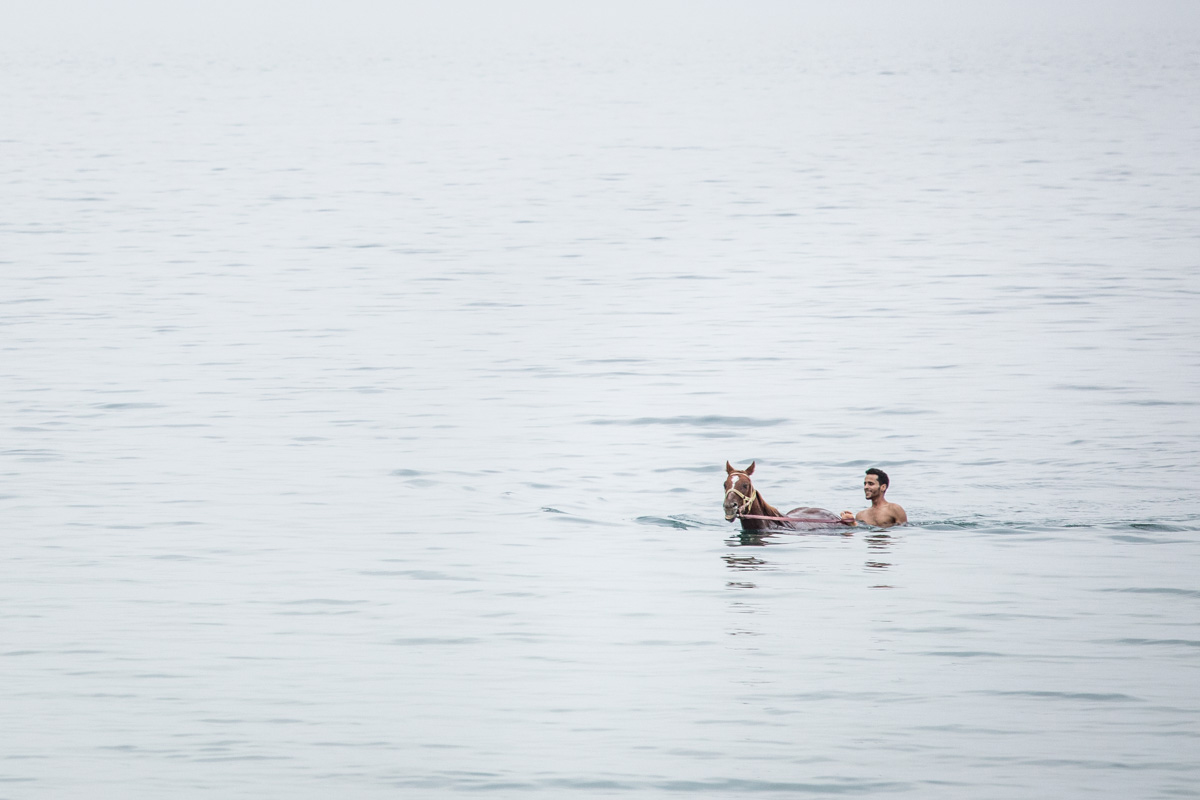
I waded into the water, where tourists from around the world were merrily congregating in the shallows and slathering themselves in the sea’s rich, chocolate-colored mud, which is renowned (or at least well marketed) for its beautifying properties. First I tried the requisite float on my back, which seemed to be what most tourists were doing. The water was remarkably supportive — my arms and legs rose out of the water while my torso bobbed, as if by magic. I walked deeper into the lake and as the ground fill away, I did not sink, could not sink. Our guide had told the truth! I grinned like a child and vowed to be less of a cynic.
Within minutes I’d perfected the balance and, while vertical in the water, moved my legs in a pedaling motion and propelled myself around the lake standing perfectly upright. It was immensely entertaining, and I would have kept doing it merrily for hours, marveling at this foreign sensation, except after 25 minutes in the water the salt began to burn my nipples and no one likes burning nipples. Back on shore, I decided to follow the crowd and smeared the magic chocolate on my face. As far as I could tell, I still looked the same afterward.
The dining hall of the lodge that night felt like a cafeteria in the United Nations, with Africans, Europeans, Americans, Asians, Christians and Muslims and agnostics, with every possible wardrobe variation imaginable. Walking in, I noticed a ticker on television news: some country has shot missiles into another country, both of which neighbor Jordan. It’s the Middle East carnage we’re so used to seeing on the news, except now I was here, amid it. And yet here in this cafeteria, and on the shores of this miraculous body of water, were people from seemingly every religion and nation and belief system on Earth, all sharing in the simple wonders of salty water and breaking bread together in peace.
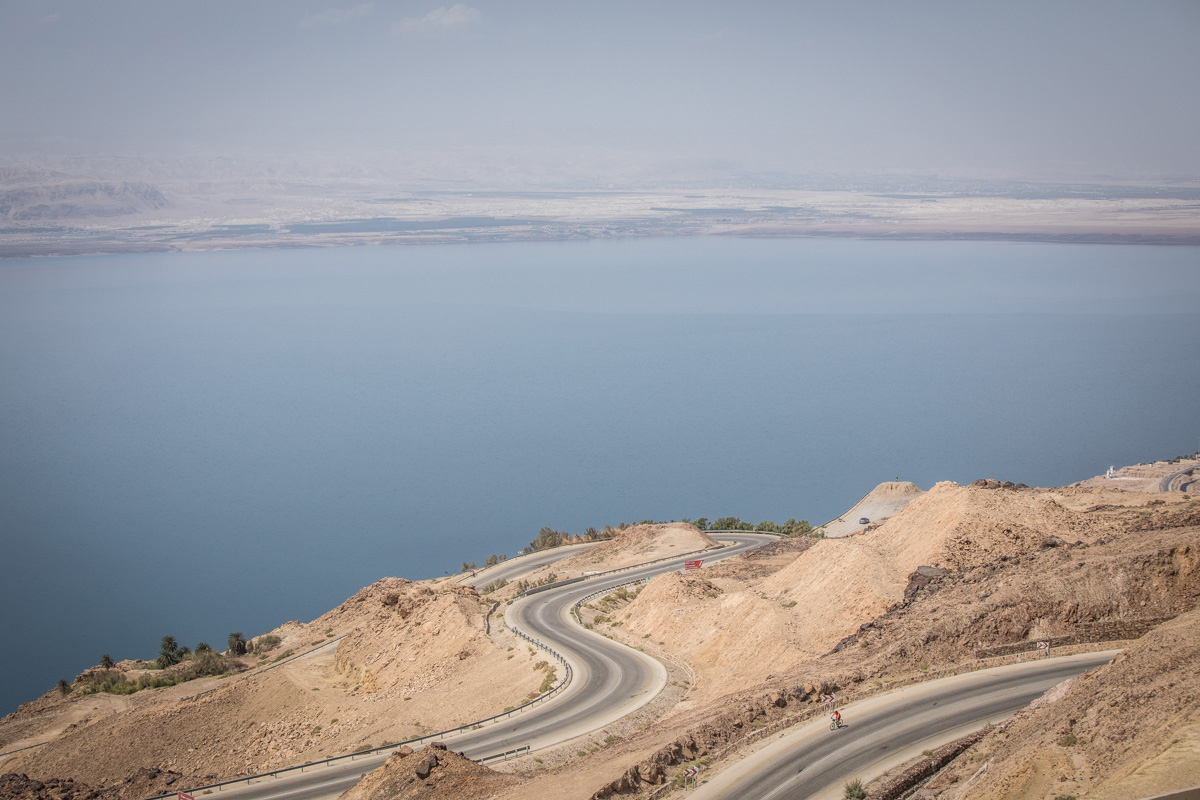
The following day, we shuttled into the impossibly arid hills above the Dead Sea where we toured the 1,700-year-old monastery atop Mount Nebo, bleached hills dropping away below us to the hazy blue sprawl of the Dead Sea, the West Bank rising behind. Here was where Moses, a prophet of both Christianity and Islam, was said to have first looked across the promised land. Coming from the greenery of Montana, I’ll admit the land didn’t look promising to me, but there was a river down there, which lent a hint of arability. The Bible says Jesus was baptized down there somewhere, along this very river. On its far banks is the town of Jericho, one of the oldest inhabited cities in the world and without rival the lowest. The ark of the covenant is said to be hidden in a cave somewhere nearby, though, perhaps still traumatized by the face-melting scene in Raiders of the Lost Ark, I didn’t bother looking.
Soon the van deposited us atop a sandy hill surrounded by sandy hills, the cerulean pool of the Dead Sea visible below. This was the ancient kingdom of Moab, circa 13th century BCE, from where the famed American cycling destination drew its name. We pointed our front wheels down a paved road — narrow like a bike path with no cars — and rushed across the landscape, undulating along desert ridges, tucking into descents, and streaking through a sunblasted otherworld. The riding is Martian, the air cooks our skin, and I marvel, once again, at the places bicycles can take you.
The road turned to dirt, the sun somehow became hotter, and every rocky, dusty climb pulled torrents of sweat from our pores. I poured water over my head and pedaled slowly with Ann, a Swiss doctor, and talked about skiing. Three camels appeared on the sandy plain and behind, beneath ruddy cliffs, were distant canvas tents. This was the home of a Beduin family, a nomadic people from the time of Moses who still live by ancient traditions. I tried to imagine what their life was like, raising children and animals, tending camels, moving seasonally with the supply of water.
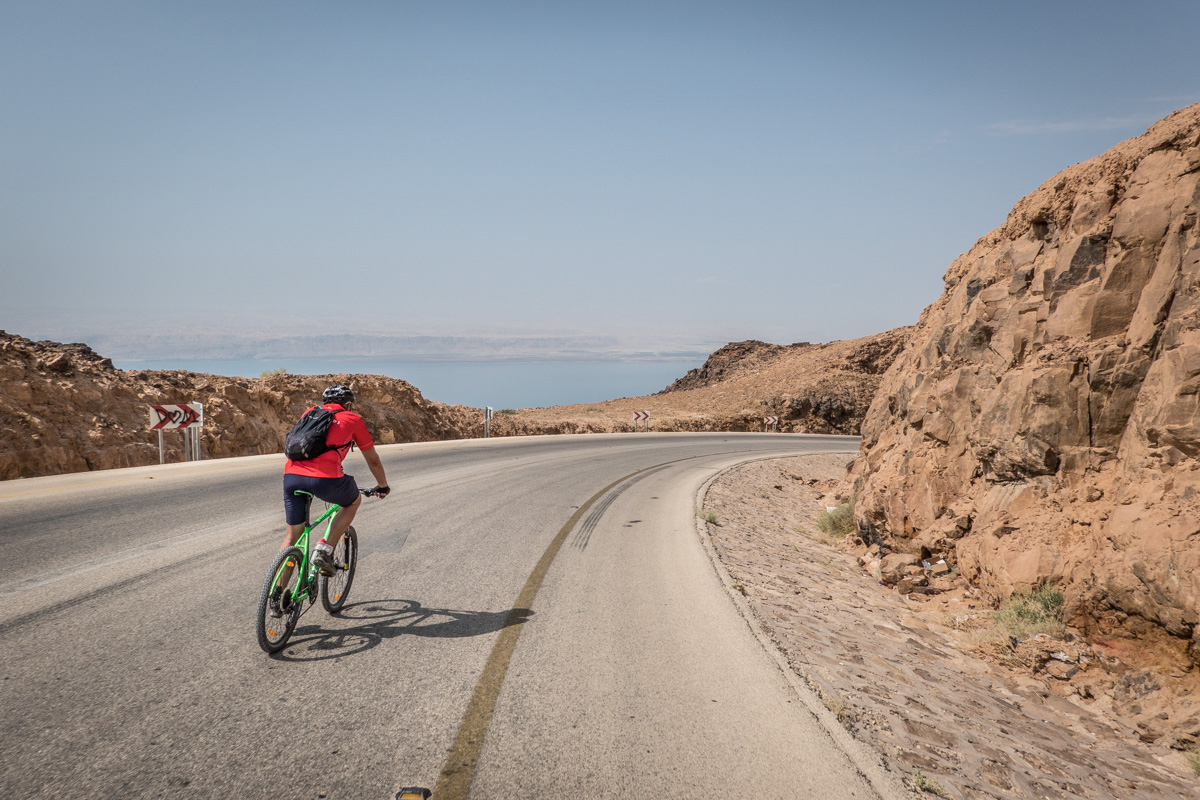
And then we were on a paved road again, bombing down once more to the Dead Sea. We were a blur now, leaning our bikes into the turns as far as we dared on knobby tires. The tarmac ribbon was impossibly serpentine, bending over and back on itself like intestines in a thrilling plunge to the planet’s navel. We lunched on shore and piled in the van again, the tour continuing, at least for the others.
A couple hours later, at a stone village cum hostel set beneath soaring red-rock cliffs, where the clack of horse hooves could be heard and adhans echo off rock walls, I bade the group farewell. They would continue on to the spectacular deserts of Wadi Rum and the cliff-carved ruins of Petra, one of the world’s seven wonders, but my time here was over. This glimpse — into the ancient past, into a potentially more peaceful future, and into the cycling potential of this storied landscape — was enough to convince me that I must someday return.


